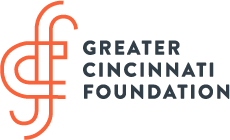Weighing the Options: Private Foundation or Donor Advised Fund?
“I want to start a foundation” is a phrase you may have heard from your clients in the past. And while a private foundation can be a great fit for the right person, an exploration of alternative structures can be very valuable to your client’s estate or financial plan. Here are three common myths about the differences between private foundations and donor advised funds (DAFs).
MYTH: DAFs are all the same and only private foundations can be customized.
REALITY: DAFs offer powerful flexibility, customization, and local expertise—often with fewer administrative burdens than a private foundation.
It’s true that private foundations are distinct legal entities, and they offer governance control. But assuming that DAFs are cookie-cutter vehicles is a mistake. Today’s DAFs—especially those managed by Greater Cincinnati Foundation —are far from one-size-fits-all.
Here’s why your clients may find more value in a GCF donor advised fund:
- Favorable Tax Treatment. As a public charity, GCF allows your clients to make tax-deductible contributions of cash or marketable securities, with higher deduction limits than those available to private foundations. And unlike private foundations, DAFs have no minimum annual distribution requirements—your clients can recommend grants when the timing is right.
- Local Insight and Strategic Support. While commercial DAFs offer convenience, they can’t match the personal service and deep local knowledge of a community foundation. At GCF, your client becomes part of a community of givers—collaborating, co-investing, and learning alongside others with similar interests. Our team brings unmatched insight into regional needs and nonprofits, helping donors make meaningful, high-impact decisions.
- Legacy and Succession Planning. GCF supports your clients in building long-term philanthropic plans that span generations. We offer expertise in family philanthropy, strategic grantmaking, and values-based giving—ensuring that your client’s charitable legacy continues to reflect their values and passions.
MYTH: Deciding whether to establish a DAF or a private foundation mostly depends on size.
REALITY: Donor advised funds are scalable, strategic, and offer advantages that many high-net-worth clients prefer.
The size of a DAF, like the size of a private foundation, is unlimited. The United States’ largest private foundations are valued well into the billions of dollars.
- Lower Costs, Less Complexity. DAFs don’t require the formation of a separate legal entity, saving time, legal fees, and administrative overhead.
- Privacy When It Matters. Unlike private foundations, which must file public tax returns (Form 990-PF), individual DAFs are not publicly disclosed. Donors can also grant anonymously if they choose.
- Custom Fit Philanthropy. GCF works closely with advisors and their clients to design giving plans that reflect their goals, whether that’s legacy building, family engagement, or discreet generosity.
The decision of whether to establish a DAF or a private foundation–or both–is much less a function of size than it is other factors that are tied more closely to the objectives a client is trying to achieve.
MYTH: DAFs and private foundations are mutually exclusive.
REALITY: Many clients benefit from using both—a DAF and a private foundation—to maximize impact, efficiency, and flexibility.
It’s not always an either/or decision. In fact, some of the most successful philanthropic strategies involve combining a donor advised fund with a private foundation. Each vehicle has unique strengths, and together, they can offer powerful synergy.
Here’s how a hybrid approach can work for your clients:
- Anonymity When Needed. Again, DAFs allow for anonymous grantmaking—ideal for situations where your client wants to give quietly, without public attention or solicitations.
- Gifts of Complex Assets. DAFs can accept appreciated, nonmarketable assets such as closely-held business interests or real estate, with more favorable tax treatment than a private foundation can offer.
- Flexibility During Market Shifts. Using both vehicles allows for diversified investment and payout strategies, helping clients maintain consistent support for causes they care about—even in uncertain economic times.
Some private foundations have even transferred their assets to a DAF at GCF to carry on the foundation’s original mission. Terminating a private foundation and consolidating giving through a DAF is sometimes the best alternative for a client when the day-to-day management and administration of the private foundation has become more time-consuming than expected and is taking time and focus away from nonprofits, the community, and making grants.
Finally, the administrative load of managing a private foundation sometimes becomes overwhelming, especially if the family members who handled these functions initially have retired, passed away, or simply become busy with other projects.
We encourage you to reach out anytime you are evaluating how to structure a charitable giving plan to achieve both your client’s charitable goals and financial goals. Our team is here to help. In many cases, GCF’s tools and services are a great fit for your client’s needs. If not, we will point you in the right direction.

